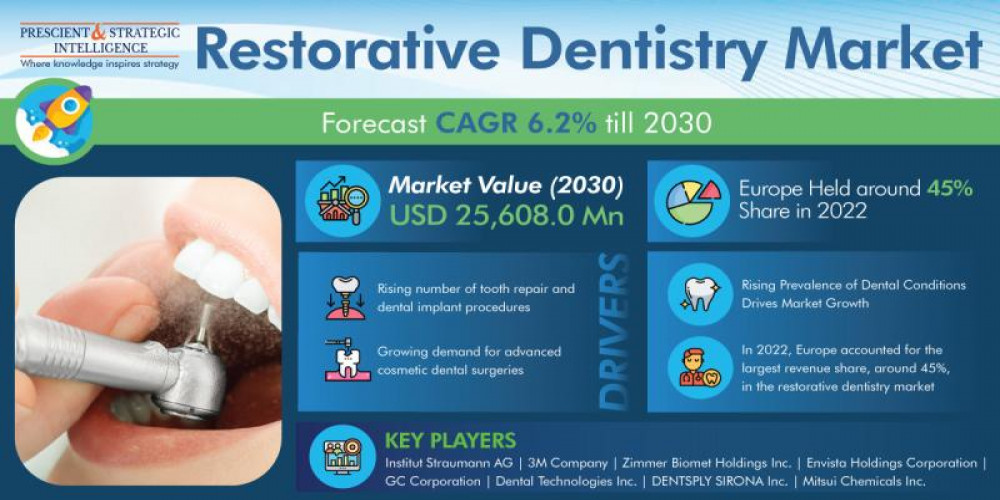In the world of dentistry, there is a transformative field devoted to repairing, advancing, and revitalizing smiles – Restorative Dentistry. With a subtle combination of artistry and accuracy, restorative dentists function untiringly to not only restore dental function but also to bring back confidence and liveliness to their patients’ lives.
The restorative dentistry market size stood at USD 15,789.2 million in 2022, and it is expected to grow at a CAGR of 6.2% during 2022–2030, to reach USD 25,608.0 million by 2030.
Restorative dentistry includes an extensive selection of treatments targeted at repairing injured teeth, substituting missing ones, and advancing overall oral well-being. From simple fillings to multifaceted dental implants, the aim stays the same: to make natural-looking, strong solutions that flawlessly mix into the patient’s smile.
One of the key foundations of restorative dentistry is dental fillings. One of the most common dental problems for both the young and the old alike is cavities, which are caused by decay. Restorative dentists work with composite resin or porcelain materials to fill cavities thus rebuilding the tooth’s shape, structure, and performance while retaining its beauty.

Yet, not only does restorative dentistry cover such fillings but also encompasses other procedures. Crowns and bridges are among the most commonly used procedures to restore teeth that are badly damaged or to replace lost ones. Prosthetic appliances which are used for the purpose of replacing missing teeth do not only restore the appearance of a smile but also ensure proper dental function thus making an individual eat and speak well.
For individuals facing complete tooth loss, restorative dentistry offers a life-changing solution: dental implants. Implants function as man-made tooth roots, providing a strong support foundation for artificial teeth like crowns, bridges, or dentures. Unlike conventional dentures, implants are firmly attached to the jawbone, providing similar stability and strength to the natural teeth.
In addition to the function, restorative dentistry has also made aesthetics a prominent part of the teeth arrangement. Aesthetic issues like stains, chips, or misalignments can greatly damage one’s confidence and personal feelings about themselves. Restorative dentists use such techniques as teeth whitening, veneers, and orthodontics to achieve more attractive teeth that elicit a feeling of beauty and power.
Increasing count of dental implant and tooth repair procedures, rising demand for progressive cosmetic dental operations, growing occurrence of numerous dental issues, and mounting healthcare expenditure.
What sets restorative dentistry apart is its modified method to every patient’s different requirement. Each treatment plan is accurately custom-made to confront individual worries while prioritizing long-term oral well-being and comfort. Whether it is a single tooth refurbishment or a full-mouth rebuilding, restorative dentists work carefully with their patients to attain optimal results.
Hence, the increasing count of dental implant and tooth repair procedures, rising demand for progressive cosmetic dental operations, growing occurrence of numerous dental issues, and mounting healthcare expenditure are the major factors contributing to the growth of the restorative dentistry market.

